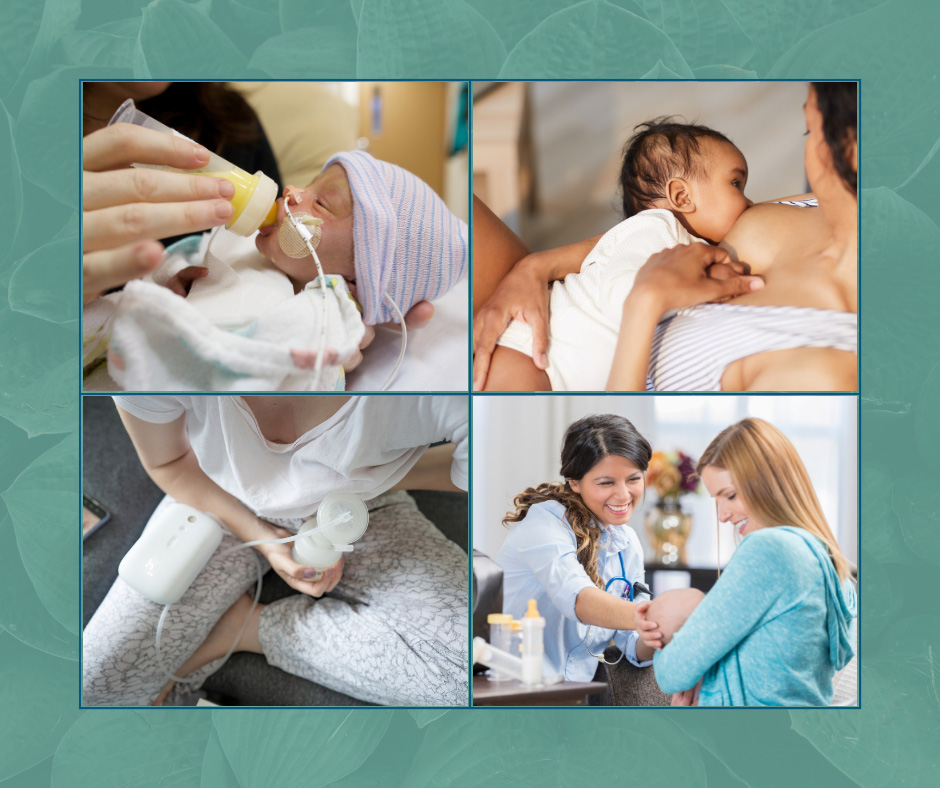Breastfeeding Can Look Different on Everyone

Celebrating Lactation in the NICU
World Breastfeeding Week and National Breastfeeding Month in August gave us reasons to elevate the conversation about breastfeeding and mothers’ own milk as key ingredients for healthy infants and children.
These lactation celebrations are a great reminder that “breastfeeding” can look different from family to family. While we typically see breastfeeding images that feature a mom cradling a baby to feed, the reality is that lactation can take many different forms depending on the mother and the baby’s unique circumstances. At AngelEye, we believe every parent should be informed and educated about the options and support available for their personal journey. Our digital family engagement technology is uniquely designed to achieve this goal for parents and our hospital partners.
Feeding in the NICU – A Parent View
For infants who are medically unstable or premature, direct breastfeeding may not be a good fit for meeting their nutritional needs. If you’re a NICU parent, that means breastfeeding – or parenthood in general, for that matter – may not look exactly as you envisioned it would.
NICU families have to navigate a unique combination of lactation challenges. These challenges can be physiological (illness, prematurity, delayed onset of milk production), psychological (stress, anxiety), and logistical (dealing with separation, back-and-forth travel to the hospital amidst balancing work and care for other children).
For NICU families, “breastfeeding” may instead look like…
- Many, many pumping sessions
- Tube-feeding expressed milk by NG, OG, or G-tube
- Using a supplemental nursing system or syringe feeder while nursing
- Non-nutritive sucking or latching practice sessions
- Using donor milk
If you’re a parent for whom breastfeeding looks different than you anticipated: we see you and celebrate you! Your baby’s feeding journey is breastfeeding, even if it doesn’t match the version we see on brochures or in the media.
Every millimeter of milk you provide gives your baby vital nourishment, whether it’s by mouth or by feeding tube. It’s scientifically well established that human milk offers premature babies the most gut-friendly nutrition as well as protection against disease and re-admission to the hospital. Even what may feel like tiny volumes of pumped milk can be an integral part of your baby’s care.
Care Team Support “Every Step of the Way”
If you’re a healthcare worker who helps families meet their feeding goals – we celebrate you too! This year’s National Breastfeeding Month theme was “every step of the way,” which includes the role that clinical staff play in ensuring that families are well supported. According to the US Breastfeeding Committee, this means “envision[ing] a world in which every family is supported at every step along the infant feeding journey, with warm and coordinated hand-offs and transitions so that the needs of lactating families and those who support them are anticipated and met.”
NICU staff are a critical component in breastfeeding support. From the IBCLCs helping parents establish a milk supply while they’re separated from their babies….to the nurses educating and empowering families that every drop of milk is valuable…to the neonatal therapists helping babies develop feeding skills…to dietitians and milk technicians making sure expressed milk is carefully prepared…AngelEye applauds your expertise and your commitment to supporting families every step of the way.
NICU clinicians appreciate that breastfeeding looks different for every family and are there to help each family meet the feeding goals that most make sense for them. Without your enthusiastic, informed support, lactation would not be an option for so many dyads.
The Gift of Donor Breast Milk
Yet another way breastfeeding manifests in the NICU is through the gift of donor milk. Experts agree that when mother’s own milk is not available, donor milk is the next best option. Donor milk is particularly helpful for the smallest and most fragile infants. Compared to formula, donor milk is associated with a lower risk of necrotizing enterocolitis (NEC), and is therefore highly recommended for patients with very low birth weight and severe intestinal disorders.
According to the Human Milk Banking Association of North America (HBANA), more and more milk is donated and distributed every year. In 2019, early 7.4 million ounces of donated breast milk were pasteurized and distributed to hospitalized babies in the US and Canada. This milk came from over 12,000 generous donors and was processed via 29 accredited milk banks.
Donor milk banks take a variety of safety precautions, including (but not limited to) donor screenings, pasteurization, and lab testing. These processes help ensure that donor milk is safe for the most vulnerable recipients.
How to Donate Breast Milk
If you have extra breast milk, donating it can be a truly meaningful gift for hospitalized babies and their families. Visit this link to learn more about the donation process and locate the closest milk bank near you.
